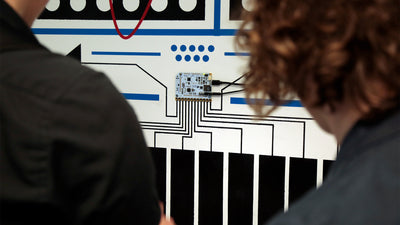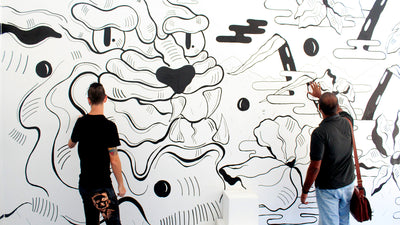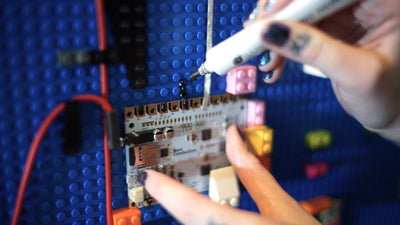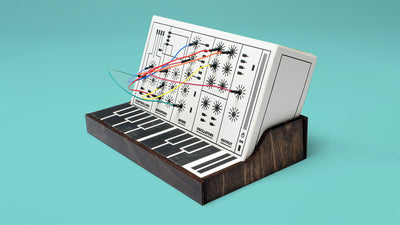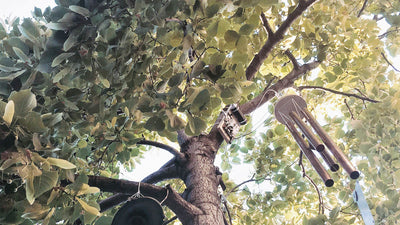Interactive Sonic Paintings - Playing Music With Art and Electric Paint

We recently discovered a music art installation, made with Electric Paint and Arduino, by Ayal Subar, a music and interactive design student at the University of Michigan.
Ayal has recently been experimenting with interactive design, concerning performance and human-computer interaction. This installation is part of his study, with the goal to make an interactive piece that augmented a specific space, sonically and visually. In this case, the stairwell of the School of Music at the University of Michigan was temporarily transformed from its usual state of being into a tangible sonic space.
The interaction that he was inspired by is another installation from our Bare Conductive community; the Format 3 that he experienced first hand at the Museum of Arts and Design in New York City this past year.
Ayal wanted to take this seemingly "magical" interaction using conductive paint and introduce it into a space with his own sonic fingerprint, allowing other people to contribute to by interacting with the work.
From a visual standpoint, he had recently been experimenting with paint, specifically working with the creation of geometric patterns and shapes using black dots and lines.
Bare Conductive Electric Paint fit right in with his project, not only aesthetically, but also due to the fact that the paint remains highly conductive over large areas, especially if thin, saturated lines are used.
Sonically, he knew he wanted to sculpt some sort of generative synthesis that paired with the visual aesthetic of each painting, but gave the user some liberty in how the environment might sound, based on their interaction. Ayal also wanted to contribute to the ambient atmosphere and not be too intrusive in his use of the public soundscape.
All of these thoughts were brought together on the technical side of things. Ayal made seven paintings using a brush, tape, and Electric Paint on 20x20 inch plywood sheets, which were coated with white primer.
He then coated each painting with workable fixative to reduce smudging when touched. Each painting was taped to the brick wall of the staircase. After they were hung, alligator clips were directly attached to the paintings, which were then connected to long wires that were concealed under each step. These were then connected to an Arduino microcontroller and finally, to a computer.
The Arduino board was simply measuring changes in capacitance as people touched the conductive paint, which essentially provided the ground in an open circuit. These changes in capacitance were sent to Max/MSP where Ayal constructed the generative aspect of his sound design.
His code in Max/MSP was able to detect when someone was touching a specific painting. If someone was touching the painting, the code would send MIDI messages to Ableton Live, choosing random notes in specified musical scales within a range of random time intervals.
Ayal says that he designed each painting to correspond to specific MIDI instruments that he had designed in Ableton Live. The audio was then routed to a stereo pair of PA speakers at the top and bottom of the stairs.
He had to also add a note "Please touch the paintings", so the audience could easily understand the action that had to take.
The interaction element was simple and strong - people touched and played with the paintings as they walked the staircase. It did not take long for people to figure out that the only way for them to make a sound was to actually touch the black conductive paint.
Thanks to the magic of Bare Conductive paint, users would "get it" and apply their new knowledge to the rest of the paintings. Users would also play with each other as groups, one at the top of the staircase and one at the bottom. Sometimes these duets were a pair of strangers. One woman candidly asked me as her daughter was playing with a painting, "Is this used for therapy?" An idea that could definitely be applied in therapeutic projects.
Images & Video: Ayal Subar
We love it when you share your projects! Post your project on Instagram, YouTube, or Twitter, and make sure to tag @bareconductive or use #bareconductive. You can also send your videos and photos to info@bareconductive.com so we can post them on our site for the world to see.


